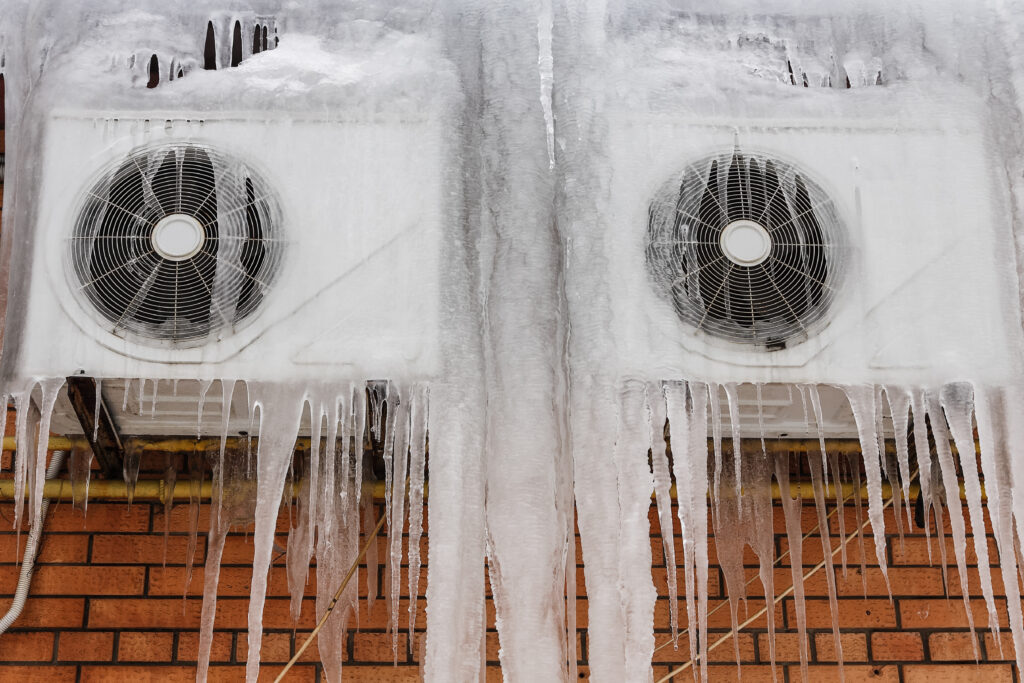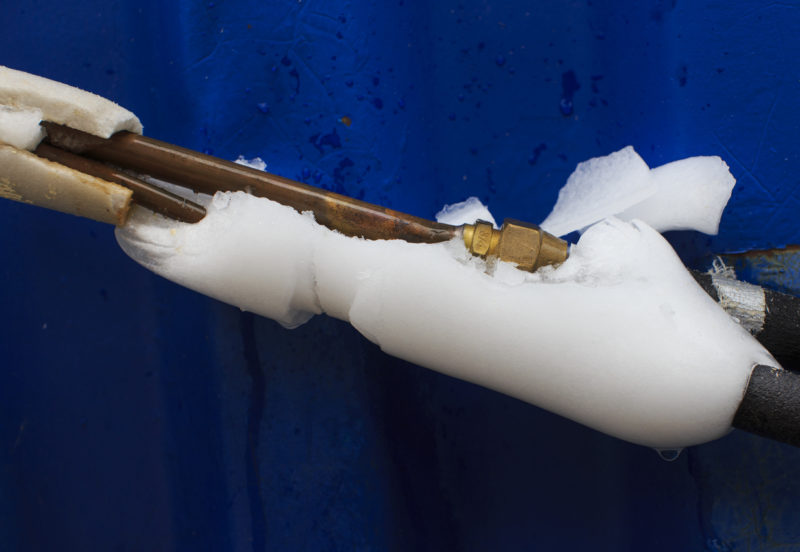This great article in the next paragraphs involving Have a Frozen AC Line? Here’s How to Fix It is really captivating. Don't overlook it.

Intro
Finding that your a/c pipeline is iced up can be worrying, especially throughout warm summer season when you rely on your a/c unit one of the most. Recognizing what to do in such a scenario is important to stop further damage to your cooling system and ensure your convenience inside.
Understanding the Causes
A number of factors can add to the freezing of an air conditioner pipe. Recognizing these causes can assist you resolve the problem successfully.
Lack of Airflow
One usual source of a frozen AC pipe is inadequate air movement. When the air movement over the evaporator coil is restricted, it can trigger the coil to drop below freezing temperature, causing ice development on the pipeline.
Low Refrigerant Levels
Inadequate cooling agent levels in your air conditioner system can likewise lead to an icy pipe. Low refrigerant levels can cause the stress in the system to drop, causing the freezing of moisture on the evaporator coil.
Winter Conditions
In cooler environments, freezing temperature levels outside can contribute to the cold of air conditioner pipelines. If your air conditioning unit is not properly protected or if there are leakages in the ductwork, cool air can penetrate the system, creating the pipeline to ice up.
Dirty Air Filters
Unclean or blocked air filters can restrict air flow in your AC system, bring about numerous problems, including an icy pipe. It's necessary to change or cleanse your air filters consistently to make sure appropriate air flow and protect against ice accumulation.
Indications of a Frozen AC Pipe
Identifying the indicators of a frozen AC pipeline is vital for timely activity.
Minimized Airflow
If you observe a significant decrease in air flow from your vents, it could indicate a frozen pipeline.
Ice Buildup on the Pipe
Visible ice build-up on the cooling agent line or the evaporator coil is a clear indication of an icy air conditioner pipe.
Unusual Sounds from the Unit
Unusual audios, such as hissing or bubbling, originating from your air conditioning system can signify that there's ice present on the pipe.
Immediate Actions to Take
When faced with a frozen air conditioner pipe, it's necessary to act promptly to prevent more damages to your air conditioning system.
Turning off the air conditioning
The first step is to turn off your a/c unit to avoid the system from running and exacerbating the problem.
Checking for Blockages
Examine the location around the indoor unit for any obstructions that might be obstructing air flow, such as furniture or curtains.
Defrosting the Pipe
You can utilize gentle techniques like putting towels taken in warm water around the icy pipeline to help thaw it slowly.
Preventive Measures
Taking preventive measures can aid avoid future events of an icy air conditioning pipeline.
When DIY Methods Fail
If your efforts to thaw the pipeline or address other concerns are unsuccessful, it's time to hire an expert.
Value of Hiring a Professional HVAC Technician
A certified HVAC service technician has the knowledge and devices needed to diagnose and fix issues with your AC system safely and effectively.
Routine Maintenance Checks
Schedule routine upkeep checks with an expert HVAC service technician to guarantee that your air conditioning system is running effectively.
Transforming Air Filters
Consistently replace or cleanse your air filters to prevent air movement restrictions and maintain optimal performance.
Protecting Exposed Pipes
If your a/c pipes are subjected to cold temperature levels, take into consideration insulating them to avoid freezing during winter season.
Seeking Professional Help
If DIY methods stop working to fix the problem or if you're uncertain about just how to continue, it's ideal to seek aid from a qualified HVAC service technician.
Final thought
Managing a frozen air conditioning pipeline can be an aggravating experience, yet recognizing just how to respond can help lessen damages and recover comfort to your home. By understanding the causes, identifying the signs, and taking timely activity, you can successfully attend to the concern and prevent future events.
What to Do If Your AC Line Is Frozen
Make Sure All Supply and Return Air Vents Are Open
If you notice problems with airflow, the first thing you should do is check your supply and return vents. Supply vents distribute clean, conditioned air throughout your home. As this air becomes stale, it’s pulled into the return vent, where it’s reconditioned before being sent back out through the supply vent.
When these vents are closed, air won’t flow in the home. Before examining your AC, check the vents in every room and ensure they’re all open.
Check for a Dirty Air Filter
Another possible cause of limited airflow is a dirty air filter. Your air conditioner’s filters catch elements you don’t want to breathe in, such as dirt and dust. Over time, filters can become clogged, ultimately blocking air from flowing in and out. The lack of airflow can then cause the entire coil to freeze and will completely restrict any air from moving through it. The AC may need to be powered off for one to two days to allow the coil to thaw after replacing the filter to allow proper functioning of the unit. This debris can also accumulate on your AC’s evaporator coil, requiring a more serious repair. In general, air filters should be cleaned regularly (about every two weeks).
Assess Your Outdoor Unit
In addition to checking your AC, assessing the outdoor unit is a good idea. Also known as the condensing unit, it works with your interior unit to release heat outside. An issue with the outdoor unit can result in rising internal temperatures.
Overgrown Shrubs or Clogged Leaves
From leaves and twigs to shrubs and debris, there’s no shortage of outdoor elements that can accumulate around your condensing unit. When these elements get lodged inside the unit, they can block airflow. Fortunately, removing the blockage can solve the problem.
Sounds of a Broken Fan
Shrubs and leaves aren’t the only things that can impede your outdoor unit’s airflow. If the fan is broken, the unit won’t be able to properly get rid of heat — which means the internal temperature won’t go down. First, make sure the fan is spinning. If it is, check for the following sounds of a broken fan:
Buzzing Rattling Screeching Hissing Clicking Preventative Measures
Nobody wants to deal with a frozen AC line. In addition to causing problems with your air conditioner, they require professional repairs. On the bright side, there are preventative measures you can take to help ensure this issue doesn’t arise in the first place.
https://www.coopergreenteam.com/blog/what-to-do-if-ac-line-frozen

I came across that write up about Air Conditioner Frozen? How To Fix your Frozen AC Line when doing a search on the search engines. Sharing is nice. Helping others is fun. We enjoy reading our article about Air Conditioner Frozen? How To Fix your Frozen AC Line.
Book With Us Today!